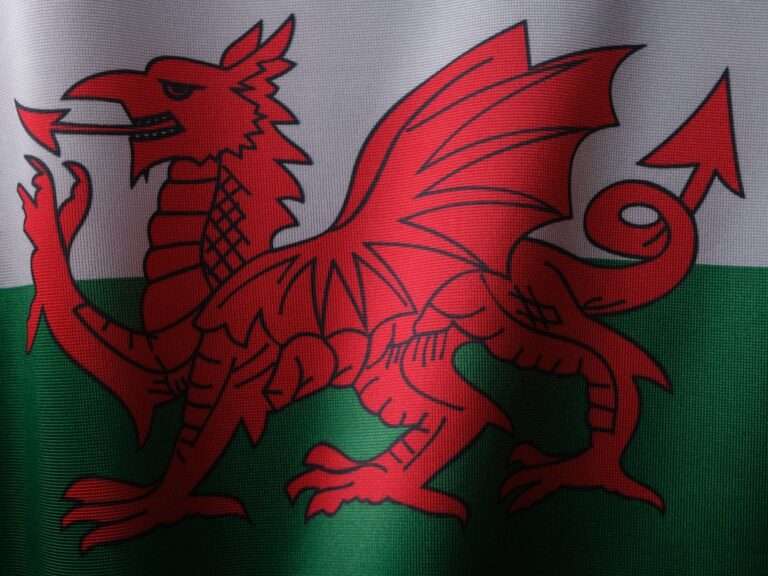The Phoenix: A Symbol of Renewal and Resilience in Mythology and Beyond

The Phoenix is a mythical creature that has long been associated with the concepts of renewal and resilience. It is often depicted as a bird that is consumed by fire and then rises from its own ashes, symbolizing the ability to overcome adversity and be reborn stronger than before. This powerful symbol has been used in various cultures and mythologies throughout history, each with their own interpretations and meanings.
Key Takeaways
- The Phoenix is a symbol of renewal and resilience.
- The Phoenix myth originated in ancient times and has significance in various cultures.
- Archetypal symbols in the Phoenix myth include fire, rebirth, and immortality.
- The Phoenix is a symbol of the sun and rebirth in ancient Egyptian religion, and of transformation in Greek mythology.
- In modern culture, the Phoenix is a symbol of hope and regeneration, and Phoenix tattoos represent personal transformation and growth.
The Mythology of the Phoenix: Origins and Significance
The origins of the Phoenix myth can be traced back to ancient Egypt, where it was known as the Bennu bird. In Egyptian mythology, the Bennu bird was associated with the sun god Ra and was believed to be a symbol of rebirth and renewal. It was said to live for hundreds of years before building a nest of twigs and setting itself on fire. From the ashes, a new Bennu bird would rise, representing the eternal cycle of life, death, and rebirth.
In Greek mythology, the Phoenix was known as a majestic bird that lived for centuries before igniting itself in flames and being reborn from its own ashes. It was believed to be a symbol of immortality and transformation. The Phoenix was said to possess healing powers and was often associated with the sun god Apollo. Its ability to rise from the ashes represented the triumph over death and the promise of new beginnings.
Archetypal Symbols in the Phoenix Myth: Fire, Rebirth, and Immortality
The Phoenix myth is rich in archetypal symbols that resonate with people across cultures and time periods. One of the most prominent symbols is fire, which represents destruction but also transformation. The act of the Phoenix setting itself on fire symbolizes the letting go of old ways and embracing change. It is through this process of destruction that rebirth becomes possible.
Rebirth is another key symbol in the Phoenix myth. The idea that something can rise from the ashes and be reborn stronger than before is a powerful metaphor for personal growth and resilience. It reminds us that even in the face of adversity, we have the ability to start anew and create a better future for ourselves.
Immortality is also a significant symbol in the Phoenix myth. The idea that the Phoenix can live for centuries and be reborn again and again represents the eternal nature of the human spirit. It reminds us that our legacy can live on long after we are gone, and that our actions have the power to create lasting change.
The Phoenix in Ancient Egyptian Religion: A Symbol of the Sun and Rebirth
| Aspect | Metric |
|---|---|
| Origin | Ancient Egyptian religion |
| Symbolism | Sun and rebirth |
| Appearance | Bird with colorful plumage and a crest of feathers on its head |
| Mythology | The Phoenix was believed to die and be reborn from its own ashes |
| Significance | Represents the cyclical nature of life and death, and the hope for eternal life |
In ancient Egyptian religion, the Phoenix, known as the Bennu bird, was closely associated with the sun god Ra. It was believed to be a manifestation of Ra himself, representing his daily journey across the sky. The Bennu bird was seen as a symbol of rebirth and renewal, as it was believed to rise from the ashes each morning to begin a new day.
The Bennu bird was also associated with the concept of creation. In some myths, it was said to have been present at the beginning of time when the world was created. Its role as a symbol of rebirth and renewal tied into this idea of creation, representing the cyclical nature of life and the constant potential for new beginnings.
The Phoenix in Greek Mythology: A Symbol of Rebirth and Transformation
In Greek mythology, the Phoenix was known as a majestic bird that lived for centuries before igniting itself in flames and being reborn from its own ashes. It was often associated with the sun god Apollo and was believed to possess healing powers. The Phoenix’s ability to rise from the ashes represented the triumph over death and the promise of new beginnings.
The Phoenix was also seen as a symbol of transformation in Greek mythology. Its fiery death and subsequent rebirth symbolized the transformative power of change. It reminded people that even in the face of destruction, there is always the potential for growth and renewal.
The Phoenix in Chinese Mythology: A Symbol of Empowerment and Rejuvenation

In Chinese mythology, the Phoenix, known as the Fenghuang, was seen as a symbol of empowerment and rejuvenation. It was often depicted as a composite creature, combining the qualities of several different animals, including the head of a rooster, the body of a snake, the wings of a bird, and the tail of a fish.
The Fenghuang was believed to be a benevolent creature that brought good fortune and prosperity. It was associated with the element of fire and was seen as a symbol of transformation and rebirth. The Fenghuang’s ability to rise from the ashes represented the power to overcome adversity and emerge stronger than before.
The Phoenix in Christian Symbolism: A Symbol of Resurrection and Eternal Life
In Christian symbolism, the Phoenix is often associated with the concept of resurrection and eternal life. It is seen as a symbol of Christ’s resurrection and the promise of life after death. The Phoenix’s ability to rise from the ashes represents the triumph over death and the hope for eternal salvation.
The Phoenix is also seen as a symbol of spiritual transformation in Christian symbolism. Its fiery death and subsequent rebirth symbolize the transformative power of faith and redemption. It reminds believers that through their faith in Christ, they can be transformed and renewed.
The Phoenix in Modern Culture: A Symbol of Hope and Regeneration
The Phoenix has continued to be a powerful symbol in modern culture, representing hope and regeneration. It is often used in literature, film, and art to convey themes of resilience and personal growth. The image of the Phoenix rising from the ashes has become synonymous with overcoming adversity and starting anew.
In popular culture, the Phoenix is often associated with superheroes and their ability to rise above challenges and emerge stronger than before. It is seen as a symbol of inner strength and the power to overcome obstacles. The Phoenix’s ability to rise from the ashes resonates with people who have faced adversity and inspires them to keep going.
Phoenix Tattoos and Their Meanings: A Symbol of Personal Transformation and Growth
Phoenix tattoos have become increasingly popular in recent years, with many people choosing to get inked with this powerful symbol. These tattoos often represent personal transformation and growth, as well as the ability to overcome challenges and start anew.
The image of the Phoenix rising from the ashes is a reminder that no matter how difficult life may be, there is always the potential for renewal and rebirth. It serves as a constant reminder to stay resilient and embrace change.
The Phoenix as an Archetypal Symbol of Renewal and Resilience
In conclusion, the Phoenix is a powerful symbol of renewal and resilience that has been used in various cultures and mythologies throughout history. Its ability to rise from the ashes represents the triumph over adversity and the promise of new beginnings. The archetypal symbols present in the Phoenix myth, such as fire, rebirth, and immortality, resonate with people across cultures and time periods.
Whether it is seen as a symbol of the sun and rebirth in ancient Egyptian religion, a symbol of transformation in Greek mythology, a symbol of empowerment in Chinese mythology, or a symbol of resurrection in Christian symbolism, the Phoenix serves as a reminder that even in the face of destruction, there is always the potential for growth and renewal.
In modern culture, the Phoenix continues to be a symbol of hope and regeneration, inspiring people to overcome challenges and embrace change. Whether it is through tattoos or other forms of art, the image of the Phoenix rising from the ashes serves as a constant reminder to stay resilient and embrace the power of renewal.
If you’re interested in exploring more symbolism, you might find the article on the symbolism of a snake fascinating. Snakes have long been associated with various meanings and interpretations across different cultures and religions. From representing transformation and rebirth to symbolizing wisdom and healing, the snake holds a significant place in symbolism. To delve deeper into this intriguing topic, check out the article on Symbolism of a Snake.
FAQs
What is the Phoenix?
The Phoenix is a mythical bird that is said to have the ability to rise from its own ashes and be reborn.
What does the Phoenix symbolize?
The Phoenix is a symbol of rebirth, renewal, and resurrection. It represents the idea of overcoming adversity and rising from the ashes of destruction.
What cultures have stories about the Phoenix?
The Phoenix appears in the mythology of many cultures, including ancient Egypt, Greece, Rome, and China. It is also found in Native American and Middle Eastern folklore.
What is the origin of the Phoenix myth?
The origin of the Phoenix myth is unclear, but it is believed to have originated in ancient Egypt. The story of the Phoenix was later adopted by the Greeks and Romans, who added their own interpretations and variations.
What are some common themes associated with the Phoenix?
Some common themes associated with the Phoenix include death and rebirth, immortality, transformation, and the cyclical nature of life.
What are some famous works of literature that feature the Phoenix?
The Phoenix appears in many works of literature, including Harry Potter and the Order of the Phoenix, Fahrenheit 451, and T.S. Eliot’s poem “The Waste Land.”





